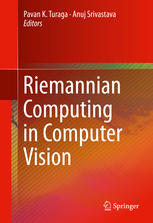

Most ebook files are in PDF format, so you can easily read them using various software such as Foxit Reader or directly on the Google Chrome browser.
Some ebook files are released by publishers in other formats such as .awz, .mobi, .epub, .fb2, etc. You may need to install specific software to read these formats on mobile/PC, such as Calibre.
Please read the tutorial at this link: https://ebookbell.com/faq
We offer FREE conversion to the popular formats you request; however, this may take some time. Therefore, right after payment, please email us, and we will try to provide the service as quickly as possible.
For some exceptional file formats or broken links (if any), please refrain from opening any disputes. Instead, email us first, and we will try to assist within a maximum of 6 hours.
EbookBell Team

0.0
0 reviewsThis book presents a comprehensive treatise on Riemannian geometric computations and related statistical inferences in several computer vision problems. This edited volume includes chapter contributions from leading figures in the field of computer vision who are applying Riemannian geometric approaches in problems such as face recognition, activity recognition, object detection, biomedical image analysis, and structure-from-motion. Some of the mathematical entities that necessitate a geometric analysis include rotation matrices (e.g. in modeling camera motion), stick figures (e.g. for activity recognition), subspace comparisons (e.g. in face recognition), symmetric positive-definite matrices (e.g. in diffusion tensor imaging), and function-spaces (e.g. in studying shapes of closed contours).